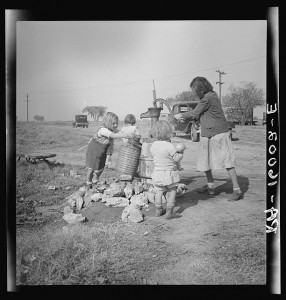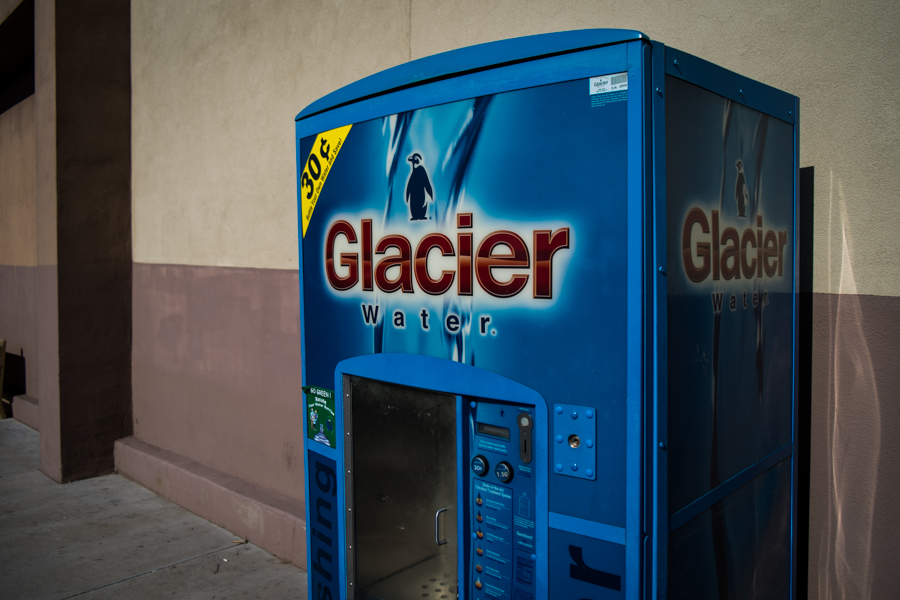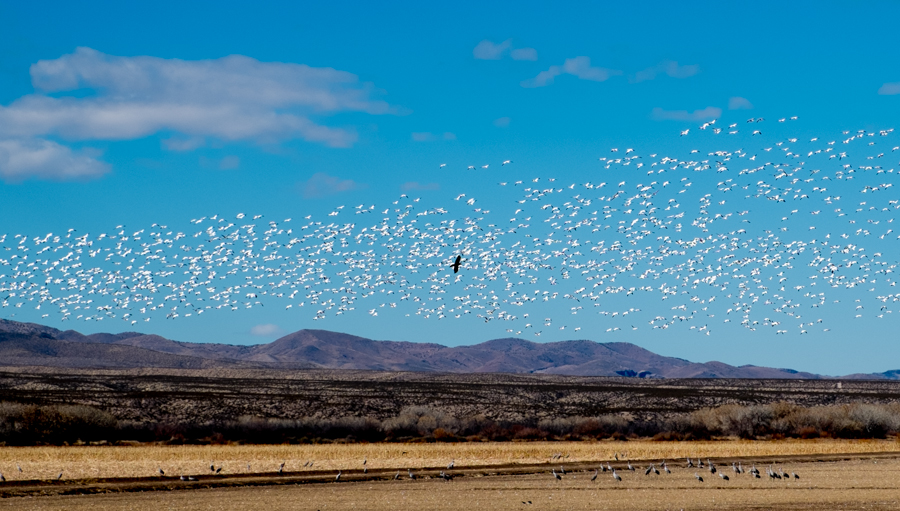California is entering its fourth drought in as many decades. Yet even now, some communities lack water meters to track how much water people are using and to charge them accordingly.
Many of those households don’t even receive monthly water bills. They pay for water through yearly assessments attached to their property taxes, which may be rolled into their monthly mortgage payments.
Parade crowd size watch: Seattle 12th person edition
So yeah, Seattle won the big pointyball game, and lots of people came out for a parade to celebrate. But are we surprised to learn that parade organizers overestimated the crowd size?
“There is civic pride that goes into estimating these numbers. They tend to be overstated wildly,” says Steve Doig, the Knight Chair in Journalism at Walter Cronkite School of Journalism and Mass Communication at Arizona State University, who has covered the subject of crowd estimation.
“Or maybe it’s from a cop who looks around and says, ‘My God, there must be 700,000 people here.’?”
Previous Inkstain coverage of crowd size estimates here.
“Glacier Water” doesn’t really come from a glacier
Stuff I wrote elsewhere: headed toward ESA litigation on the Rio Grande
From this morning’s newspaper, we appear to be headed toward Endangered Species Act litigation this year on the Rio Grande:
Human water diversions have left the Rio Grande ecosystem with too little water to maintain the minnow and other species that depend on the river’s flow, including the valley’s iconic cottonwoods, said Jen Pelz, Wild Rivers Program coordinator for WildEarth Guardians.
If the plagiarism is inaccurate, is it still plagiarism?
A fresh-looking piece of Colorado River journalism made the rounds this week, by Frances Weaver at The Week, about the Colorado River’s current decadal-scale drought. But some of the language had a familiar ring to it. Here’s Weaver:
The most immediate cause is 14 years of drought unrivaled in 1,250 years.
Here’s Michael Wines in the New York Times from January:
The sinuous Colorado River and its slew of man-made reservoirs from the Rockies to southern Arizona are being sapped by 14 years of drought nearly unrivaled in 1,250 years.
So if you drop the “nearly”, is it no longer plagiarism?
Here’s Weaver:
Arizona farmers have started using laser technology to keep their fields table flat and reduce runoff.
And Wines:
Arizona farmers reduce runoff, for example, by using laser technology to ensure that their fields are table flat.
It’s not just Wines. Here again is Weaver:
For 6 million years, the Colorado River flowed southwest from the snowy Rocky Mountains to a sodden, 2-million-acre-wide delta in Mexico, finally emptying its 14 million acre-feet of freshwater into the Sea of Cortez.
The eerily similar doppleganger here, by Rachel Nuwer in the New York Times:
For six million years, the Colorado River ran its course from its soaring origins in the Rockies to a once-teeming two-million-acre delta, finally emptying 14 million acre-feet of fresh water into the Sea of Cortez.
But here’s my favorite. First Weaver:
“I’ve got corn plants that are as brown as you could imagine,” said Weld County, Colo., farmer Dave Eckhardt last summer, after losing more than 400 acres of his 1,400-acre crop.
OK, maybe “last summer” isn’t quite right. Here’s Steve Raabe in the Denver Post in the summer of 2012. “Last summer” is a year off.
“I’ve got corn plants that are as brown as you could imagine. There’s nothing there,” said Weld County farmer Dave Eckhardt, who estimates that 400 acres of his 1,400-acre corn crop is a total loss.
So let’s tally up the sins here in just that sentence. Weaver stole from the Denver Post, but got the year wrong and, more importantly, Weld County is east of the continental divide. It’s not even in the Colorado River Basin! Holy fuck, if you’re going to steal other people’s work, the least you can do is get shit like this right.
There’s more, but you get the idea.
Update: Frances Weaver explains:
When there’s a drought, you pump groundwater, until you can’t
Best line about water management I ever wrote:
Wet years have a way of covering up a multitude of water management sins. Drought exposes them for all to see.

Water supply. Migratory camp for cotton pickers. San Joaquin Valley, California. American River camp. by Dorothea Lange, Farm Security Administration, 1936
It also helps to expose those sins, apparently, if you have satellites. Here’s Jay Famiglietti, talking about what the GRACE satellites show about groundwater depletion in California’s Central Valley:
During the drought of 2006-2010, state and federal surface water allocations were drastically reduced, forcing farmers to tap groundwater reserves far more heavily than in ‘normal,’ wetter years. The resulting volume of depleted groundwater was so great that it was registered by a satellite ‘scale’ that orbits about 400 km above Earth’s surface.
It gets worse:
[T]he combined Sacramento and San Joaquin River basins have already lost 10 cubic kilometers of fresh water each year in 2012 and 2013.
That’s nearly a Lake Mead a year. Clearly, in a variable climate, farmers in the Central Valley have planted far more acreage than the system’s water supply can support on some time scales we can now clearly see. They will plant less. That’s inevitable.
It’s Stein’s law, in action: “If something cannot go on forever, it will stop.” But Stein’s law, glib as it is, masks an important set of policy questions. In its basic form, it’s an argument for the lack of need to do anything. Water conservation will come to California when the surface supply is short and the groundwater has run out and some significant portion of the farms are permanently fallowed. The water management sin being exposed here is the failure to pursue a more graceful exit strategy for the communities that will suffer as a result.
Megadroughts: Thirsty Gecko’s twitter literature review
A lot of birds
One more from yesterday’s road trip to the Bosque del Apache, the National Wildlife Refuge 90 minutes’ drive south of Albuquerque. As I’ve written before, snow goose overpopulation is an ecological disaster. But when they take flight? Yowza.
Puzzling over water and agricultural economics
I do not understand this. Not being rhetorical or coy. I really do not understand this.
I’ve observed before that Yuma and Imperial counties, the two farm regions that have benefitted from enormous allocations of Colorado River water and the support of the federal government that goes with it, have some of the highest unemployment rates in the country.
Yesterday Bruce Ross pointed to a study that found that, if Central California (a similar water beneficiary) were its own state, it would be the poorest in the country. Bruce observes:
What does it say about America’s farm system that the vital source of most of America’s fruits, nuts and vegetables is poorer than Mississippi?
Getting a lot of water seems more like a curse than a benefit?
Mulroy on growth, supply and water pricing
There’s so much rich material in Henry Brean’s exit interview of Pat Mulroy, the outgoing head of the Southern Nevada Water Authority, that I barely know where to begin, but let’s start with water pricing.
Mulroy makes clear (as she always has) that she viewed it as her responsibility to deliver the water the community said it needed, at the cheapest price possible, and she described her legacy as this:
Nobody ever was slowed down, hampered or in anyway obstructed from building wherever they wanted to build in the valley, and that was a Herculean effort. We kept this valley going during its most phenomenal growth spurt. I mean when I started, the valley had less than 600,000 people in it. Today it has 2 million.
As Brean noted in the interview, there are people who don’t view this as a particularly good thing, to which Mulroy responded:
You can’t control growth through your utilities….
Why me? Go talk to the governor. Go talk to the elected officials. You know? I’m willing to be the bad guy on any number of things, but there are some things I’m not willing to be the bad guy on.
We’ve always come at it from, “OK, if this is where you want to be, this is what you’re going to have to do to get there.” That’s our job. You want this community to grow and you want it to prosper. All right, then you’re going to have to pay to build facilities to bring in additional water, you’re going to have to start using less per capita to stretch what you have and you’re going to have to actively get into long-term resource planning. If you’re willing to do those things, then you can have what you want.
And what is the role of water pricing in all this?
I am a big believer that when you pay your water bill, you’re not paying for the resource. What you’re paying for is having it treated and pumped to your home so that it’s readily available to you. You’re paying for the facilities. And I will always believe that you should never charge more than you actually have to in order to deliver safe, reliable water to your customers when they need it.
To which Peter Gleick responded:
.@jfleck Gleick on water pricing: You should never charge less than you have to to encourage efficient use and protect ecosystem values.
— Peter Gleick (@PeterGleick) February 3, 2014


